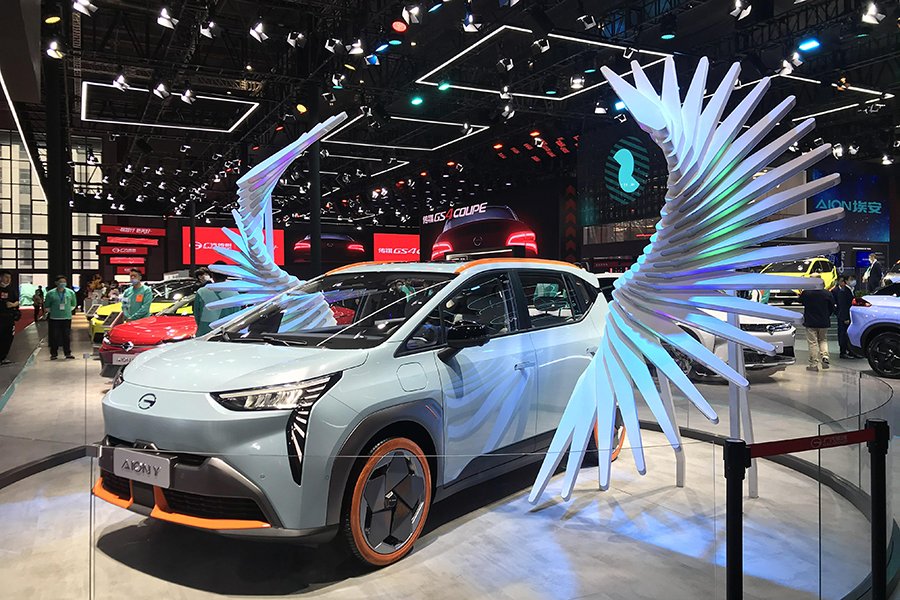The China Factor: Why Luxury Carmakers Face Difficulties In The Chinese Market

Table of Contents
Intense Domestic Competition
The rise of powerful Chinese luxury car brands poses a significant threat to established international players. Domestic manufacturers like Hongqi, with its resurgence and focus on high-end models, and BYD's increasingly sophisticated lineup, are fiercely competing for market share. These brands leverage several key advantages:
- Increasingly sophisticated designs and technology in domestic luxury vehicles: Chinese brands are rapidly closing the technological gap, offering features comparable to, and sometimes exceeding, international counterparts. This includes advanced driver-assistance systems (ADAS), electric vehicle (EV) technology, and luxurious interiors.
- Aggressive marketing strategies targeting younger, affluent Chinese consumers: Domestic brands employ targeted marketing campaigns that resonate strongly with younger, tech-savvy consumers, often leveraging digital channels and influencer marketing.
- Government support and incentives favoring domestic automakers: Government policies and subsidies provide a significant advantage to Chinese brands, making them even more competitive on price.
- Leveraging strong brand recognition and national pride within the Chinese market: A potent blend of patriotism and rising consumer confidence in domestic products fuels the success of these brands. This "national champion" effect is a force to be reckoned with. The growth of Chinese luxury car brands significantly impacts the China luxury car market.
Understanding the Unique Chinese Consumer
Chinese luxury car buyers differ significantly from their Western counterparts. Their preferences, purchasing motivations, and brand loyalty are shaped by unique cultural and economic factors. Successfully navigating this market demands a deep understanding of these nuances:
- Preference for status symbols and brand prestige, often exceeding Western trends: Luxury cars in China are often seen as powerful status symbols, representing success and social standing. This emphasis on prestige often surpasses functional considerations.
- Strong emphasis on technological innovation and advanced features: Chinese consumers are early adopters of technology, demanding cutting-edge features and connectivity options in their luxury vehicles.
- Growing importance of social media influence and online reviews: Online platforms like WeChat and Weibo significantly influence purchase decisions. Positive online reviews and social media buzz are essential for success.
- Diverse regional preferences and purchasing behaviors across China's vast geography: Consumer preferences and purchasing power vary considerably across China's diverse regions, requiring tailored marketing strategies.
- Increasing demand for sustainable and environmentally friendly luxury vehicles: With growing environmental awareness, the demand for electric vehicles (EVs) and hybrid models within the luxury segment is rapidly increasing, influencing the China luxury car market landscape.
The Importance of Digital Marketing and E-commerce
Given the significant influence of online platforms on Chinese consumer behavior, a robust digital presence is non-negotiable. Effective digital marketing strategies are crucial for reaching and engaging potential buyers:
- Utilizing key social media platforms like WeChat and Weibo effectively: These platforms are central to social interaction and commerce in China; a strong presence is essential.
- Building a robust e-commerce presence and integrating online and offline sales channels: A seamless omnichannel approach that blends online and offline experiences is crucial.
- Leveraging data analytics to understand consumer preferences and tailor marketing efforts: Data-driven insights are essential for understanding evolving consumer demands and optimizing marketing campaigns.
- Creating engaging digital content that resonates with the Chinese consumer: Content should be culturally relevant, visually appealing, and tailored to the preferences of the target audience. This is vital for success in the online luxury car sales China sector.
Navigating Regulatory Hurdles and Import Tariffs
The Chinese automotive market is subject to complex regulations, import tariffs, and bureaucratic processes that present substantial challenges for international players. Successfully operating within this framework demands careful navigation:
- Understanding and complying with stringent emission standards and safety regulations: Meeting stringent environmental and safety regulations is paramount, requiring significant investment and adaptation.
- Navigating the import and customs processes efficiently: Understanding and streamlining the import and customs procedures is crucial for minimizing delays and costs.
- Managing the impact of fluctuating import tariffs on pricing strategies: Import tariffs can significantly impact pricing, requiring flexible and adaptable pricing strategies.
- Building strong relationships with local government agencies and regulatory bodies: Establishing strong relationships with relevant government agencies is essential for navigating regulatory complexities. These regulations significantly influence the China import regulations cars landscape.
Supply Chain Disruptions and Logistics
Global supply chain disruptions have exacerbated challenges for luxury carmakers operating in China. Managing these disruptions and optimizing logistics are critical:
- Managing disruptions to the supply of key components and raw materials: Robust supply chain management strategies are essential to mitigate the impact of disruptions.
- Ensuring efficient logistics and distribution networks within China's vast territory: Efficient logistics and distribution are critical given China's vast geographical size.
- Adapting to evolving geopolitical factors influencing the global automotive industry: Geopolitical factors can impact supply chains and market dynamics, requiring adaptability and strategic planning.
- Strengthening relationships with local suppliers to mitigate supply chain risks: Building strong relationships with local suppliers can help mitigate supply chain vulnerabilities. This is a significant aspect of the China car supply chain.
Conclusion
The China luxury car market offers tremendous opportunities but presents considerable obstacles. Success hinges on understanding the unique Chinese consumer, developing a robust digital strategy, proactively addressing regulatory complexities, and navigating supply chain challenges effectively. Ignoring the "China factor" is not an option for luxury carmakers aiming for global leadership. To thrive, companies must invest in localization, cultivate strong relationships, and continuously adapt to the dynamic demands of the Chinese luxury car buyer. Mastering the nuances of the China luxury car market is essential for long-term success.

Featured Posts
-
 From Scatological Documents To Podcast Gold An Ai Driven Approach
Apr 24, 2025
From Scatological Documents To Podcast Gold An Ai Driven Approach
Apr 24, 2025 -
 Tesla Stock Impact Q1 Earnings Reveal 71 Net Income Decrease Due To Political Issues
Apr 24, 2025
Tesla Stock Impact Q1 Earnings Reveal 71 Net Income Decrease Due To Political Issues
Apr 24, 2025 -
 Chinese Stocks In Hong Kong Surge Trade Tension Easing Fuels Rally
Apr 24, 2025
Chinese Stocks In Hong Kong Surge Trade Tension Easing Fuels Rally
Apr 24, 2025 -
 Review Of Google Fis New 35 Unlimited Mobile Plan
Apr 24, 2025
Review Of Google Fis New 35 Unlimited Mobile Plan
Apr 24, 2025 -
 Extreme Price Surge At And T Exposes Broadcoms V Mware Cost Increase
Apr 24, 2025
Extreme Price Surge At And T Exposes Broadcoms V Mware Cost Increase
Apr 24, 2025
